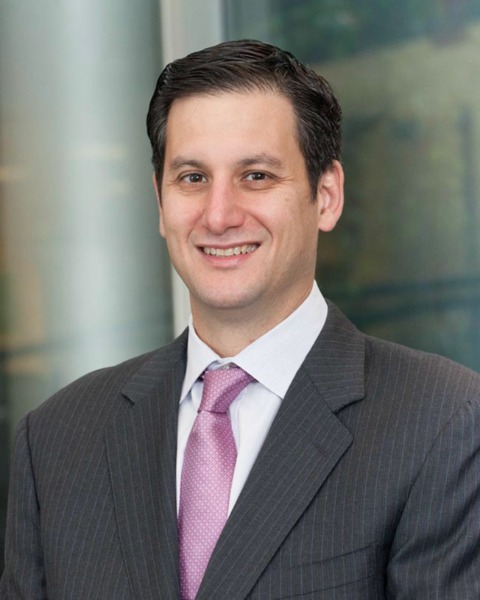HPB
P31: Survival of Patients with Microsatellite Instability-High and Lynch Syndrome-Associated Pancreatic Ductal Adenocarcinomas

Naaz Nasar, MD (she/her/hers)
Research Fellow
Memorial Sloan Kettering Cancer Center
New York , New York, United States
Naaz Nasar, MD (she/her/hers)
Research Fellow
Memorial Sloan Kettering Cancer Center
New York , New York, United States
Naaz Nasar, MD (she/her/hers)
Research Fellow
Memorial Sloan Kettering Cancer Center
New York , New York, United States- EE
Ellis L. Eikenboom, PhD candidate
PhD candidate
Erasmus University Medical Center, United States - KS
Kenneth Seier, MS
Biostatistician
Memorial Sloan Kettering, United States - MG
Mithat Gonen, PhD
Chief of Epidemiology and Biostatistics
Memorial Sloan Kettering Cancer Center, United States - AW
Anja Wagner, PhD
Researcher
Erasmus University Medical Center, United States - WJ
William R. R. Jarnagin, MD
Chief of Hepatopancreatobiliary Surgery
Memorial Sloan Kettering Cancer Center, United States - JD
Jeffrey A. Drebin, MD, PhD
Chair of Surgery
Memorial Sloan Kettering Cancer Center, United States 
Michael I. I. D'Angelica, MD
Attending Surgeon
Memorial Sloan Kettering Cancer Center
New York, New York, United States- TK
T. Peter Kingham, MD
Attending Surgeon
Memorial Sloan Kettering Cancer Center, United States 
Vinod P. Balachandran, MD
Assistant Attending Surgeon
Memorial Sloan Kettering Cancer Center, United States- KS
Kevin C. C. Soares, MD
Assistant Attending Surgeon
Memorial Sloan Kettering Cancer Center, United States - MS
Manon C.W. Spander, MD PhD
Professor of Gastrointestinal Oncology
Erasmus University Medical Center, United States 
Alice C. Wei, MD, MS, FRCSC (she/her/hers)
Attending Surgeon
Memorial Sloan Kettering Cancer Center
New York, New York, United States
Oral Poster Presenter(s)
Submitter(s)
Author(s)
Pancreatic ductal adenocarcinoma (PDAC) remains a challenging disease due to its aggressive nature, late-stage diagnosis, and limited treatment options. There is an increased interest in cancers which harbor microsatellite instability (MSI) due to their susceptibility to immune checkpoint inhibitors. MSI in PDAC is rare, and little is known about survival in this subtype of pancreas cancers. Our aim was to assess overall survival in surgically resected MSI-high (MSI-H), mismatch repair deficient (MMRd), and Lynch Syndrome (LS) associated PDACs treated in our center.
Methods:
Patients with surgically resected PDACs from 1990 to 2023 were identified. A total of 936 cases were sequenced utilizing targeted next generation sequencing. Patients with germline or sporadic pathogenic variants or likely pathogenic variants in one of the DNA MMR genes MLH1, MSH2, MSH6, PMS2, or 3’ end of EpCAM were identified. MSI-H, MMRd, and LS-associated cases were matched to patients with microsatellite stable or MMR proficient, non-LS-associated PDAC in a 1:2 ratio with a direct match on age (±5 years), gender, and year of surgery (±3 years). Kaplan-Meier curves were used to visualize the data. A generalized estimating equation (GEE) cox model with robust sandwich estimator was used to compare matched cohorts.
Results:
17 patients with MSI-H, MMRd or LS-associated surgically resected PDACs were identified. Five patients were classified as MSI-H, 3 patients were MSI-indeterminate, and 9 patients were microsatellite stable. Eight patients were found to have pathogenic germline variants in LS-associated genes. The remaining nine patients had sporadic pathogenic DNA MMR gene variants (MLH1 n=3, MSH6 n=6). Median age at surgery was 66 (interquartile range (IQR) 60-77), 41% of the patients were female, and median year of surgery was 2014. MSI-H, MMRd or LS-associated PDACs were matched to 34 control patients.
The median survival time of the cases was 12 years vs. 1.9 years in the control group. Five-year survival rate was 81% (IQR 60-100%) and 18% (IQR 7.4%-43%), respectively. LS-associated, MSI-H or MMRd status in resectable PDAC was a strong predictor of good prognosis (hazard ratio 0.17, 95% CI 0.07-0.38, P< 0.001).
Conclusions:
Resected MSI-H, MMRd or LS-associated PDACs displayed significantly better survival compared to their MS-stable, MMR proficient, non-LS-associated counterparts, in the era before routine use of immune checkpoint inhibitors. It is expected that survival will be increased further with more frequent availability of immunotherapy.
Learning Objectives:
- Describe the incidence of microsatellite instability-high (MSI-H), mismatch repair deficient (MMRd), and Lynch Syndrome (LS) associated pancreatic ductal adenocarcinomas (PDACs).
- List different germline or sporadic pathogenic variants in DNA mismatch repair genes associated with MSI-H, MMRd or LS-associated PDACs.
- Describe the overall survival of surgically resected pancreatic ductal adenocarcinomas that are LS-associated, display microsatellite instability, or mismatch repair deficiency.
